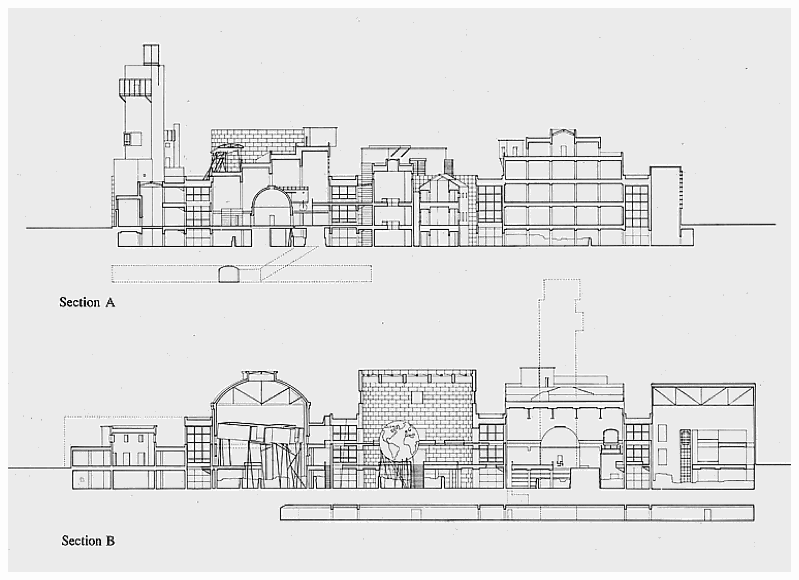
Projects – Museum of German History, Berlin
The project attempts to reveal the history of the site by incorporating both the ‘historical ruins’ of the site, and ‘traces’ of other plans for the site, in order to reveal its problematic nature as a place and circumstance. In a sense this is an attempt at karmic unveiling, including the unveiling of this architect who as a descendant of a Jewish scholar of German literature has a complex emotional response to these historical circumstances.
The project incorporates a variety of structuring devices, the Mercator grid, the centralized museum plan (Shinkel) and site lines. The museum also becomes a restatement of the city whose possibilities have been repressed by the replication of the historically based beaux-arts plan on the urban area. Within the museum there develops a small city of its own which is linked by catwalks and bridges within the grid structure. Chaotic elements start to intercede in the heavily determinant structure so as to escape the domination of planning and logic and introduce the poetic and fragmentary. This establishes another reading of history, in which poetic and mimetic references are made (the giant cross of Luther in the medieval history room) and the lines between the authentic, simulated, and arbitrary are confronted, making history provisional and confusing, fact-based and interpretative, but also ideological and subjective, even willful and arbitrary.



